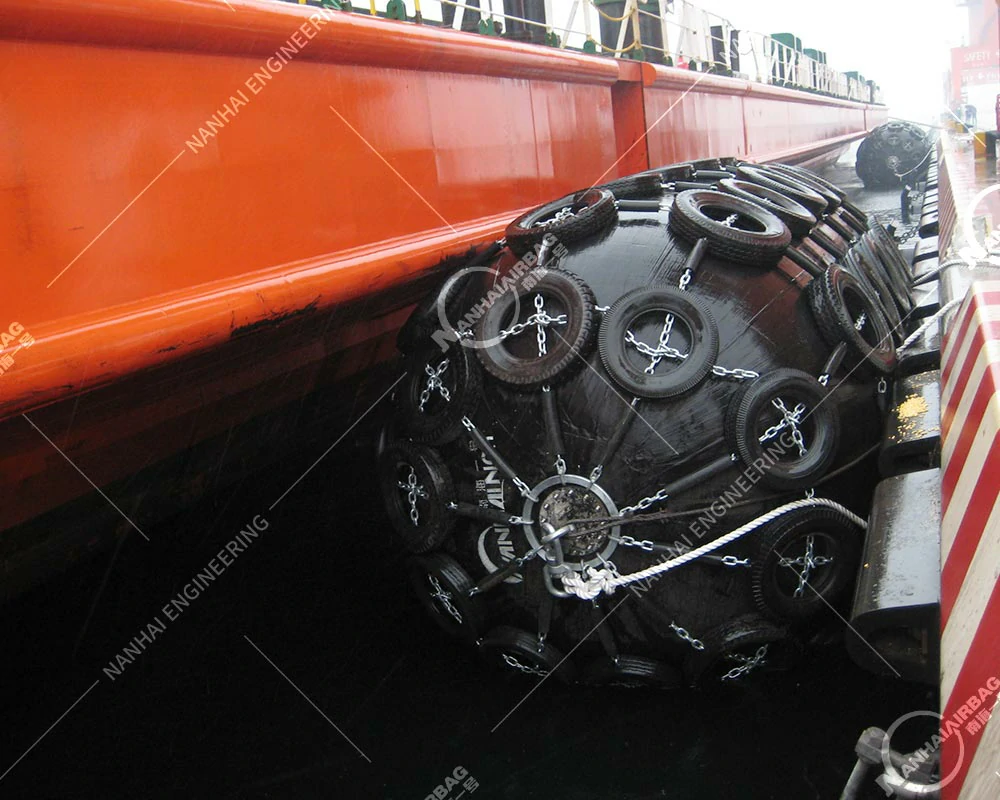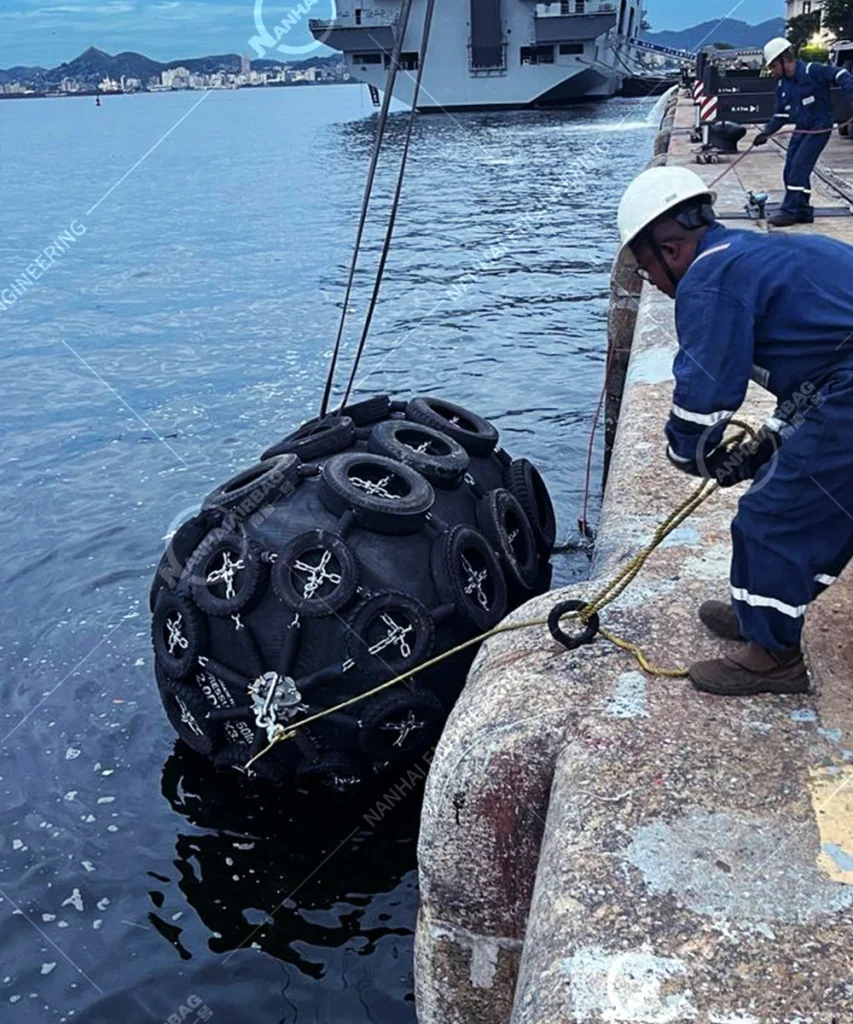Inflatable vs. Fixed Fenders: A comprehensive comparison of costs, efficiency and applicable scenarios
17/04/2025Marine Rubber Airbags: Versatile Tools for Underwater Operations
29/04/2025

How to prevent collision accidents through pressure sensing technology?
With the large-scale ships and high-frequency port operations, the passive protection mode of traditional fenders can no longer meet the safety needs of modern shipping. Inflatable fenders have become the core equipment for port collision prevention due to their high energy absorption rate and low reaction force characteristics8. However, the full realization of their performance advantages depends on the support of intelligent monitoring technology. Starting from the underlying logic of pressure sensing technology, this article will analyze how the intelligent monitoring system can achieve active prevention and precise control of collision accidents through data-driven methods.
- The core role of pressure sensing technology: from passive response to active warning
The protective effectiveness of inflatable fenders is directly related to their internal air pressure. Traditional fenders rely on manual regular inspection of air pressure, which has problems such as response lag and data error. The intelligent monitoring system based on pressure sensing technology reconstructs the protection logic of fenders in the following ways:
A、Real-time air pressure monitoring and dynamic adjustment
The pressure sensor is embedded in the fender (such as the “buffer monitoring system” of Yokohama Rubber Company in Japan), collects air pressure data at a millisecond frequency, and sends it to the control center through wireless transmission (such as LoRa, NB-IoT)39. When the ship is berthing, the system adjusts the air pressure in real time according to the impact force:
B、Low pressure warning: If the air pressure is lower than the set threshold (such as 80% of the standard value), it triggers automatic air replenishment or alarm to avoid damage to the hull due to insufficient compression of the fender;
C、High pressure protection: When the impact force exceeds the safety threshold, the system releases gas through the pressure relief valve to prevent the fender from rupturing210.
D、Multi-dimensional data fusion and risk prediction
Pressure data can be converted into key parameters such as deformation, reaction force and energy absorption rate. For example, the monitoring system of the Port of Rotterdam in the Netherlands can calculate the kinetic energy distribution of the ship when berthing by analyzing the air pressure change curve, and warn of the risks of “overspeed berthing” or “angle deviation” in advance37.
- Technical architecture of intelligent monitoring system
A. Hardware layer: sensor and communication module
B. High-precision pressure sensor: using MEMS (micro-electromechanical system) technology, can withstand extreme environments of -40℃ to 80℃, with an error rate of less than 0.5%1;
C. Redundant communication design: combining radio and fiber optic transmission to ensure data stability in bad weather (such as the dual-mode transmission solution of the Yokohama system in Japan)9;
D. Self-powered technology: some systems integrate piezoelectric materials or micro solar panels to achieve energy self-sufficiency6.
E. Software layer: data analysis and decision support
F. Edge computing: complete preliminary data cleaning at the sensor end to reduce cloud load;
G. Machine learning model: through historical data training, identify abnormal patterns (such as sudden drop in air pressure may indicate fender damage);
H. Visual interface: real-time display of fender status, support remote intervention by operators (Figure 1)57.
- Application case: from single protection to system linkage
A. “Buffer monitoring system” of Yokohama Port in Japan
The system collects air pressure data through the built-in sensor of the fender, and dynamically calculates the safe berthing speed by combining information such as ship tonnage and tidal height. When it is detected that the ship’s approach speed exceeds the standard, the terminal warning light and the ship navigation system are automatically linked to force a speed reduction of 39. According to actual measured data, the system reduces the collision accident rate by 62%7.
B. Multi-level protection network of China Yangshan Port
Deploy a pressure sensor cluster on the inflatable fender, and build an “impact force-structural damage” mapping model in combination with AI algorithm. When the fender in a certain area is frequently over-pressurized, the system automatically marks it as a high-risk area and recommends maintenance or replacement plans. At the same time, it is linked with the port dispatching system to optimize the berthing sequence of ships to reduce local loads510.
4. Technical advantages and industry value
A. “Three lines of defense” for accident prevention
The first line: real-time monitoring-immediate alarm for abnormal air pressure;
The second line: active intervention-maintaining fender performance through pressure relief or air replenishment;
The third line: system coordination-linking port equipment and ship control systems to avoid collision risks.
B. Economic benefits and environmental value
Reduce the frequency of fender replacement (extend life by more than 30%);
Reduce downtime losses caused by accidents (e.g., an LNG terminal saves more than $2 million in annual maintenance costs);
Reduce energy waste through precise air pressure control and help ports achieve carbon neutrality goals.
5. Future trends: from intelligence to autonomy
A. AI-driven adaptive systems
The next generation of monitoring systems will integrate ship AIS data, meteorological information and fender status to achieve predictive control. For example, before a typhoon arrives, the fender pressure will be automatically increased to cope with the impact of huge waves6.
B. Application of self-healing materials
Develop fender materials with built-in microcapsules. When the sensor detects damage, the repair agent is released to automatically fill the cracks, reducing the need for manual maintenance10.
C. Blockchain and data sharing
CEstablish a fender status database between ports, ensure data credibility through blockchain technology, and support global shipping safety collaboration4.
Conclusion
Pressure sensing technology gives inflatable fenders the closed-loop capability of “perception-decision-execution”, upgrading them from static protective equipment to intelligent safety nodes. With the deep integration of technologies such as the Internet of Things and AI, the intelligent monitoring system of fenders will become the core pillar of port safety, driving the shipping industry towards a zero-accident, high-efficiency future.
